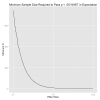














Silva Junior, C. H. L., Pessôa, A. C. M., Carvalho, N. S., Reis, J. B. C., Anderson, L. O., & Aragão, L. E. O. C.. (2021). The Brazilian Amazon deforestation rate in 2020 is the greatest of the decade. Nature Ecology & Evolution, 5(2), 144–145.
Plain numerical DOI: 10.1038/s41559-020-01368-x
URL: https://search.r-project.org/CRAN/refmans/datazoom.amazonia/html/load_prodes.html
Description:
Loads information on clearcut deforestation in the Legal Amazon and annual deforestation rates in the region. Survey is done at state or municipality level and data is available from 2000 to 2020.
# download raw data from 2000 to 2020
raw_prodes_all <- load_prodes(
dataset = "prodes",
raw_data = TRUE,
time_period = 2000:2020
)
Usage
load_prodes(dataset (...)
/*!
* Base CSS for pdf2htmlEX
* Copyright 2012,2013 Lu Wang
* https://github.com/coolwanglu/pdf2htmlEX/blob/master/share/LICENSE
*/#sidebar{position:absolute;top:0;left:0;bottom:0;width:250px;padding:0;margin:0;overflow:auto}#page-container{position:absolute;top:0;left:0;margin:0;padding:0;border:0}@media screen{#sidebar.opened+#page-container{left:250px}#page-container{bottom:0;right:0;overflow:auto}.loading-indicator{display:none}.loading-indicator.active{display:block;position:absolute;width:64px;height:64px;top:50%;left:50%;margin-top:-32px;margin-left:-32px}.loading-indicator img{position:absolute;top:0;left:0;bottom:0;right:0}}@media print{@page{margin:0}html{margin:0}body{margin:0;-webkit-print-color-adjust:exact}#sidebar{display:none}#page-container{width:auto;height:auto;overflow:visible;background-color:transparent}.d{display:none}}.pf{position:relative;background-color:white;overflow:hidden;margin:0;border:0}.pc{position:absolute;border:0;padding:0;margin:0;top:0;left:0;width:100%;height:100%;overflow:hidden;display:block;transform-origin:0 (...)

Source URL:
Source URL:
Source URL:
Source URL:
Source URL: (...)

/*!
* Base CSS for pdf2htmlEX
* Copyright 2012,2013 Lu Wang
* https://github.com/coolwanglu/pdf2htmlEX/blob/master/share/LICENSE
*/#sidebar{position:absolute;top:0;left:0;bottom:0;width:250px;padding:0;margin:0;overflow:auto}#page-container{position:absolute;top:0;left:0;margin:0;padding:0;border:0}@media screen{#sidebar.opened+#page-container{left:250px}#page-container{bottom:0;right:0;overflow:auto}.loading-indicator{display:none}.loading-indicator.active{display:block;position:absolute;width:64px;height:64px;top:50%;left:50%;margin-top:-32px;margin-left:-32px}.loading-indicator img{position:absolute;top:0;left:0;bottom:0;right:0}}@media print{@page{margin:0}html{margin:0}body{margin:0;-webkit-print-color-adjust:exact}#sidebar{display:none}#page-container{width:auto;height:auto;overflow:visible;background-color:transparent}.d{display:none}}.pf{position:relative;background-color:white;overflow:hidden;margin:0;border:0}.pc{position:absolute;border:0;padding:0;margin:0;top:0;left:0;width:100%;height:100%;overflow:hidden;display:block;transform-origin:0 (...)

Science Search Engine
body {
margin: 0;
font-family: 'Arial', sans-serif;
overflow: hidden;
background: url('https://christopher-germann.de/system-3699542_1920.jpg') no-repeat center center fixed;
background-size: cover;
}
.header {
background-color: #333;
padding: 20px;
text-align: center;
color: #fff;
}
.container {
display: flex;
flex-direction: column;
align-items: center;
margin-top: 50px;
}
.search-form {
display: flex;
flex-direction: column;
align-items: center;
}
.search-input,
.search-select,
.search-button {
border: none;
padding: 10px;
font-size: 16px;
margin: 5px;
border-radius: 10px;
width: 300px;
box-shadow: (...)
Rotating Complex Gradient Fractal Rectangles with JavaScript
body, html {
margin: 0;
padding: 0;
overflow: hidden;
background-color: #f0f0f0; /* Set a background color */
}
canvas {
display: block;
}
// Define your canvas element and context
const canvas = document.getElementById('canvas');
const ctx = canvas.getContext('2d');
// Get the screen dimensions
const screenWidth = window.innerWidth;
const screenHeight = window.innerHeight;
// Set canvas dimensions to match the screen size
canvas.width = screenWidth;
canvas.height = screenHeight;
// Function (...)

/*!
* Base CSS for pdf2htmlEX
* Copyright 2012,2013 Lu Wang
* https://github.com/coolwanglu/pdf2htmlEX/blob/master/share/LICENSE
*/#sidebar{position:absolute;top:0;left:0;bottom:0;width:250px;padding:0;margin:0;overflow:auto}#page-container{position:absolute;top:0;left:0;margin:0;padding:0;border:0}@media screen{#sidebar.opened+#page-container{left:250px}#page-container{bottom:0;right:0;overflow:auto}.loading-indicator{display:none}.loading-indicator.active{display:block;position:absolute;width:64px;height:64px;top:50%;left:50%;margin-top:-32px;margin-left:-32px}.loading-indicator img{position:absolute;top:0;left:0;bottom:0;right:0}}@media print{@page{margin:0}html{margin:0}body{margin:0;-webkit-print-color-adjust:exact}#sidebar{display:none}#page-container{width:auto;height:auto;overflow:visible;background-color:transparent}.d{display:none}}.pf{position:relative;background-color:white;overflow:hidden;margin:0;border:0}.pc{position:absolute;border:0;padding:0;margin:0;top:0;left:0;width:100%;height:100%;overflow:hidden;display:block;transform-origin:0 (...)

